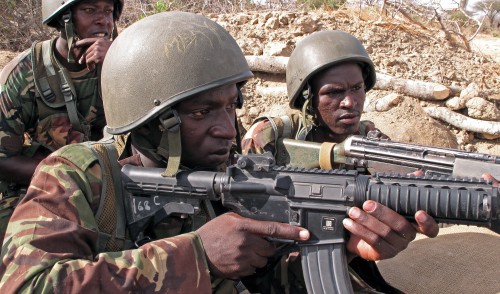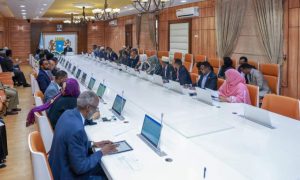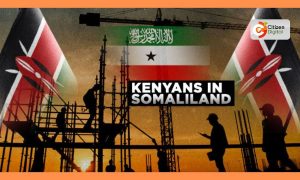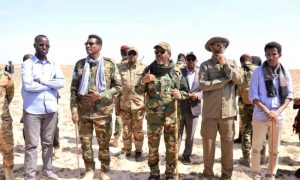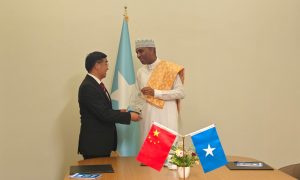
Mogadishu,16 October 2015 –There is more to Kenya’s incursion into southern Somalia than meets the eye. From Nairobi, Wanjohi Kabukuru reports that Kenya has long planned to create a Jubaland enclave in southern Somalia for its own security and economic interests. “Dislodging Al Shabaab extremists,” as Kenya explained its military push, appears just a convenient excuse.
When the Kenya Defence Forces (KDF) made their foray into Somalia late last year, it was made to appear as if they were retaliating for the attacks carried out on Kenya’s tourism sector by the Al Shabaab terrorist group based in Somalia.
Al Shabaab extremists had abducted a French tourist who later died in captivity. They had also killed a British honeymooner in the Kenyan northern coastal resort island of Lamu.
Two weeks after the Lamu archipelago incidents, two Spanish aid workers were abducted from the world’s largest refugee camp, Dadaab, in northern Kenya. Al Shabaab was blamed for all three incidents. Kenya cited Article 51 of the United Nations Charter to back the launch of “Operation Linda Nchi” (Operation Defend the Country), sent into Somalia on 16 October. At the time, the incursion by the KDF was described as being motivated by the kidnappings and Kenya’s resolve to protect its tourism interests. The reality, it now appears, is somewhat different.
It is emerging that in the previous three years, Kenya was putting in place an elaborate scheme, codenamed the “Jubaland Initiative”. Under this plan there was to be the creation of a Jubaland, encapsulating Gedo, Lower Juba and Middle Juba in Southern Somalia, bordering northern Kenya with a population of 1.3 million. The establishment of Jubaland, according to Kenya’s diplomatic and intelligence bureaucrats, would have two phases. First, it was meant to act as a “buffer zone” to safeguard Kenya from negative effects spawned by the “lawlessness in Somalia” – which included religious extremism, the flow of small arms and contraband, terrorism, piracy, uncontrolled refugees – and to safeguard Kenya’s economic interests.
The second phase would seek to establish the roots of a solid Somalia. The “Jubaland Initiative” is supposed to be modelled on the Puntland and Somaliland experience. Puntland and Somaliland are two provinces in northern Somalia that broke away from and declared their own autonomous governments when the former Somali president, Siad Barre, was ousted 20 years ago. As opposed to the rest of Somalia, these two northern provinces enjoy relative stability and functioning governments, hence Kenya’s dalliance with the model.
Whatever they call it, whether Jubaland, or Puntland, however set up, so long as it addresses the issue of terrorism on the Somali side, is welcome,” says Abdikadir Hussein Mohamed, the influential MP from Kenya’s Mandera Central, which borders Somalia in the north.
Since the fall of Barre’s dictatorship two decades ago, Somalia has never enjoyed peace, and no concrete, all-unifying administration has ever emerged. The Kenyan-born UN-backed Transitional Federal Government (TFG) has been in Mogadishu for the last seven years but has not ruled beyond the coastal capital.
A Djibouti Peace Process of 2008-09 to reinvigorate the TFG has all but failed. The TFG has not been able to extend its authority beyond Mogadishu’s urban sprawl. A major conference on Somalia called by the British government in London on 23-24 February came up with proposals to salvage the situation, but it is early days yet. It is the TFG’s inability that has seen the growth of militant-leaning outfits such as the Islamic Courts Union and Al Shabaab. After the falling-out of the Islamic Courts Union (ICU) whose capital was in the port city of Kismayo in late 2006, Al Shabaab emerged. A mutant of the ICU, Al Shabaab controls the same areas the ICU ruled – that is, Central and Southern Somalia.
Unsuccessful leadership experiments have been the template of Somalia for the last two decades, with military watchers seeing the country as a fertile breeding ground for pirates and terrorist sleepers. Add to this the annual costs associated with piracy now standing at a staggering $12bn, and (according to the UN maritime agency International Maritime Organisation) the fact that in 2010 a record 1,181 seafarers were kidnapped, of which 1,016 were recorded in Somali with demands for ransom. In 2009, the Somali pirates are said to have collected some $238m in ransom monies alone.
Executing the Kenyan project was not easy. The US, Uganda and Ethiopia expressed their reservations. According to WikiLeaks, the Ugandan President Yoweri Museveni chastised the Kenyan military as a “career army” and inexperienced in combat. Washington too saw it as a costly venture for Kenya. WikiLeaks further reveals that Ethiopia’s premier, Meles Zenawi, doubted Kenya’s tactical capacity to rout Al Shabaab and create the buffer zone.
Addis Ababa’s misgivings were based on its botched 2006 military incursion into Somalia on the one hand and fears that the support Kenya gives to the TFG forces seeking to secure Jubaland may shift to succour the Oromo National Liberation Front (ONLF) which has been active in Ethiopia’s Ogaden region for years.
After considering what appears to be historical ties with Kenya, Ethiopia turned around and fully supported Nairobi’s intentions. Zenawi’s change of heart was largely expected as in 1964 Ethiopia and Kenya signed a binding defence pact solely influenced by Somalia’s irredentist tendencies to claim vast regions of the two countries. During the colonial era, huge chunks of Somalian territory were excised by the colonial powers and given to Ethiopia and Kenya. Displeased at losing its land and people to Ethiopia and Kenya, Somalia has attempted in the past to reclaim the lost territories both through diplomacy and military force.
The 1964 pact between Kenya and Ethiopia has continuously been renewed in the last 48 years to reflect the changing realities in the Horn of Africa region.
In putting together its plan of action, Kenya lobbied hard in Western capitals and at the same time fully supported Somalia’s former defence minister Mohammed Abdi Mohammed, as Jubaland’s elected president.
As all these diplomatic initiatives were being carried out, a military plan was being put in place. Over the last three years, Kenya has trained over 3,000 Somali soldiers in readiness for formalising the Jubaland plan. At the same time Kenya procured new weaponry, upgraded its artillery, radar, tanks and air defences, and secured modern drone systems and jet fighters. Kenya also revamped its naval capabilities and trained more soldiers. This is according to documents filed with the US Department of Justice when Kenya lobbied for Washington’s military aid. Key allies were the EU, US, the East African Community bloc, the Inter-Governmental Authority on Development (IGAD), and the African Union (AU).
The entire southern sector of Somalia has been under Kenyan Defence Forces (KDF) and TFG forces for five months now, and a lot has changed since then. “Jubaland” is almost functioning and it is no longer just a Kenyan show.
The KDF are now part of the AU’s Peacekeeping Mission in Somalia (AMISOM) and US Air Force Reaper drones from their bases in Seychelles and Ethiopia are engaged in the current onslaught on Al Shabaab. Allies under the umbrella of the UN, led by the US and EU navies, have all lent their support for the war.
David Howell, the UK’s minister of state in the Foreign and Commonwealth Office, provided British support when he told the UK parliament: “We are discussing the Kenyan military intervention in Somalia with many of our partners including the EU and other organisations. The UK supports Kenyan action so long as it is undertaken in co-ordination with the Transitional Federal Government and complies with international law.”
Howell continued: “The Kenyan military operation is a response to the invasions in Kenya by Al Shabaab and other forces and it is important to note that it is an attempt undertaken with the support of the TFG in Mogadishu to bring some order and control to the situation.”
A closer look at Kenya’s “Jubaland Initiative” reveals Kenya’s intent to open up its northern region and assert its economic interests in the region. Kenya’s largest development project is dubbed LAPSSET (the Lamu Port Southern Sudan Ethiopia Transport corridor), a $24.7bn project that seeks to link the sleepy Lamu Island on the Swahili coast with the rich oilfields of Southern Sudan, as well as serve both the 80-million plus Ethiopian market and the Indian Ocean maritime trade lane.
Indeed 13 weeks after the KDF started the incursions into the southern sector of Somalia, a billion-dollar deal with neighbouring South Sudan was signed to construct a $3.9bn, 2,240km oil pipeline, connecting the oil fields of the Upper Nile state of South Sudan with Lamu.
This is not an isolated economic plan. The LAPSSET project includes a 32-berth modern port and oil refinery at Lamu, with a rail line to Juba in South Sudan and a branch line to Ethiopia.
A fibre optic cable will link South Sudan and Ethiopia, and the construction of three international airports at Lamu, Isiolo and Lokichogio, and upgrading of these three towns to become resort cities, is planned.
When completed, the Lamu port will be the largest port on the African continent. LAPSSET is the single largest investment project in Africa presently.
And this explains Kenya’s involvement in the creation of Jubaland. Even though Kenya, Ethiopia and Uganda (with the support of the US and EU) have secured their own economic and security interests by disrupting Al Shabaab’s terror links and curtailing piracy, a united Somalia complete with a universally recognised central government, remains a distant dream for now.
.
Source: NewAfrican
_____________________________
_____________________________________________________________________________________
Xafiiska Wararka Qaranimo Online | Mogadishu, Somalia
_____________________________________________________________________________________Advertisement
_____________________________________________________________________________________


